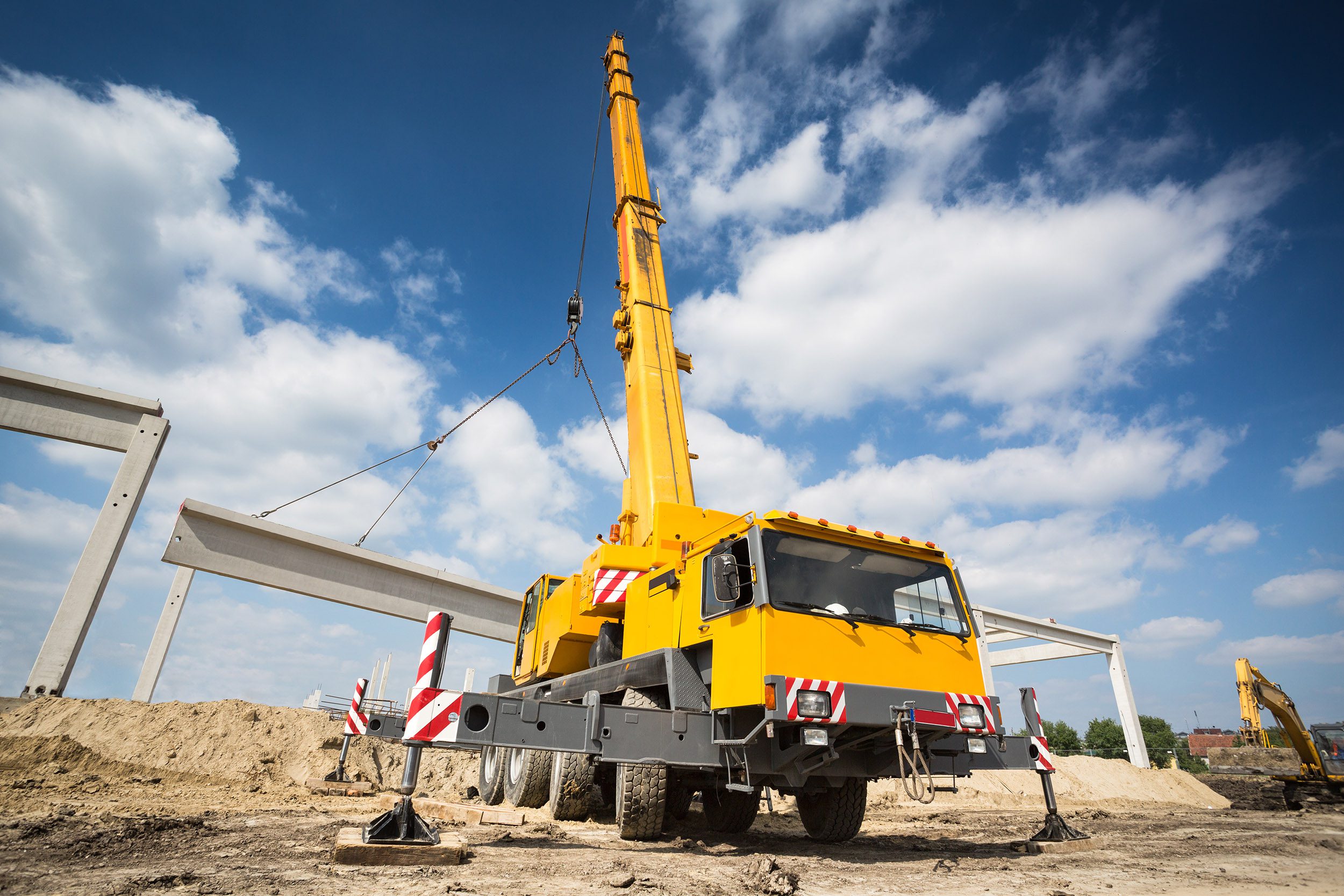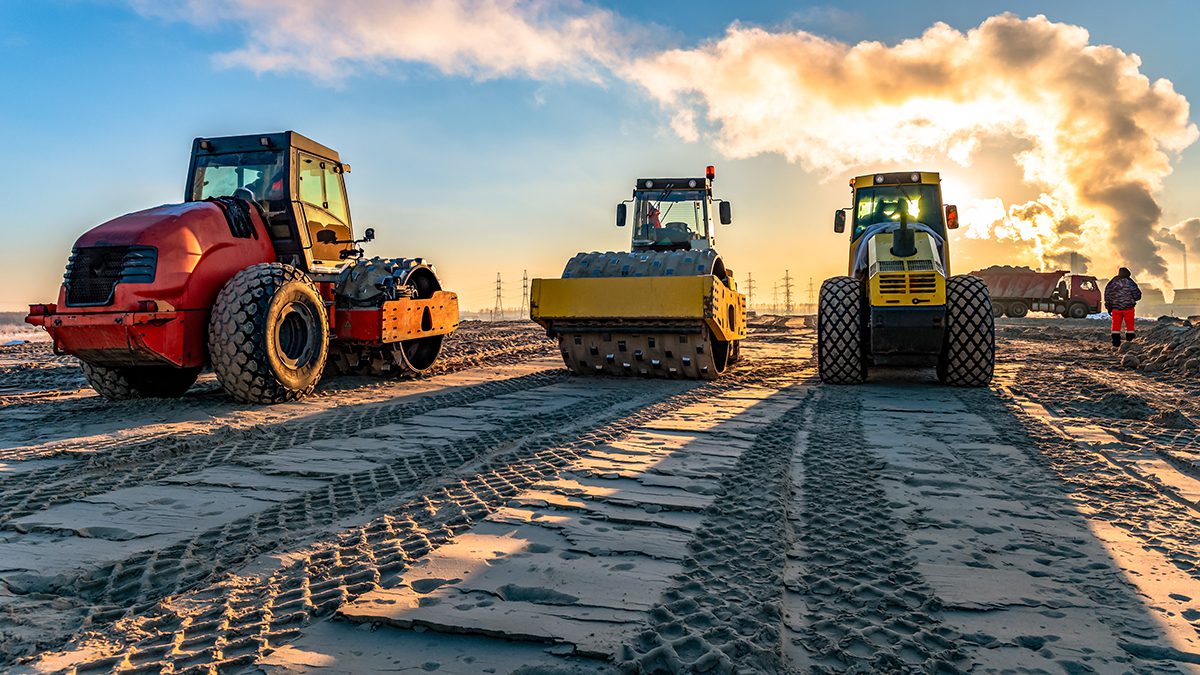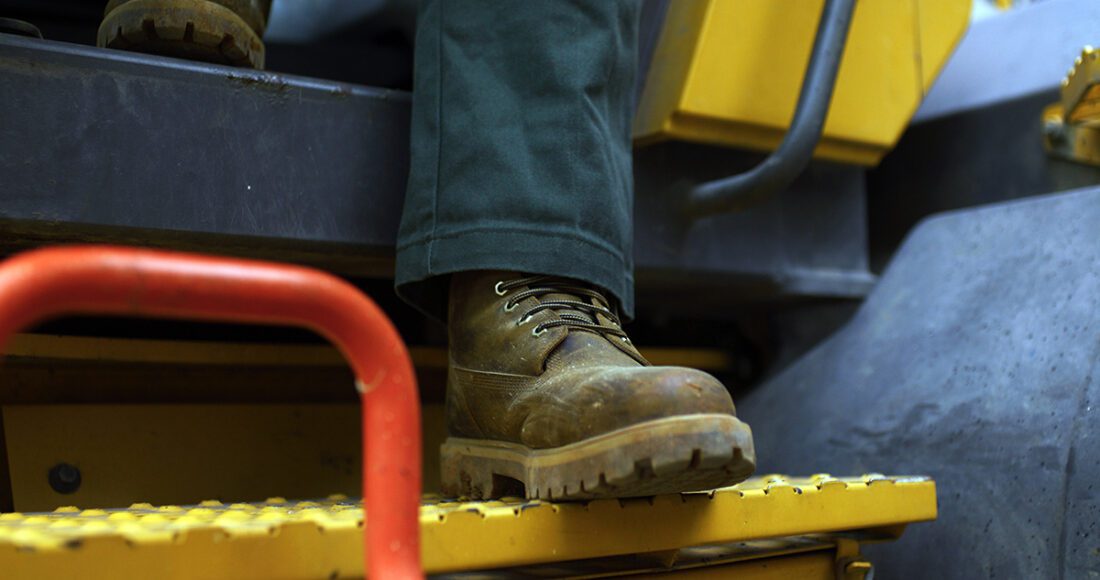Ways to Work Safely Around Heavy Equipment
An Overview of the Risks for Construction Teams Working Around Heavy Equipment—And How to Manage Them
As everyone knows, construction work carries inherent safety risks. In fact, construction has the second-highest fatality rate of any industry, accounting for 36 percent of all U.S. workplace deaths. From 2018 to 2022, an average of 770 construction workers per year died in workplace accidents.
That risk is compounded when heavy machinery is involved. Since the beginning of the twentieth century, heavy equipment has revolutionized the construction process, making it faster, more precise, and more efficient. But it has also introduced an element of danger that can’t be ignored.
One of the leading causes of injury and death in any industry is struck-by incidents. Workers may be struck by falling objects, vehicles—or by the types of heavy equipment used at construction sites. In 2019, 17.6 percent of all construction site deaths were from workers being struck by motorized non-transport vehicles, such as pavers, backhoe graders, boom lifts, and cranes.
To understand the risks, it’s useful to first consider the kinds of equipment construction crews are likely to encounter.

Types of Heavy Equipment at a Construction Site
Among the first pieces of equipment commonly used in a construction project is the scraper, which specializes in moving large quantities of earth from one place to another.
After the scrapers have done their work, graders are used to create the smooth, flat, even surfaces needed for roads, highways, parking lots, and buildings.
For those roads, highways, and parking lots, pavers come in next to lay down the asphalt.
These are all large, powerful machines that can do great bodily harm to anyone who gets in their way. The operators themselves are also vulnerable when they work in unsafe conditions or without adequate training.
Cranes of various types and sizes are also a common sight at construction projects, and for good reason. They are invaluable for lifting and moving large building components, and even other pieces of heavy equipment. To maintain their balance, cranes employ a combination of fixed and adjustable counterweights. But when that balance is lost, cranes can topple over, causing destruction to property and harm to humans.
Cranes often work on ground that is uneven or unstable. Working on sloped ground can cause a crane to lose its balance and fall. According to the Bureau of Labor Statistics, there were 297 crane-related deaths in the United States between 2011 and 2017— an average of 42 per year. Of those fatalities, 154 were the result of workers being struck by an object or equipment; 92 involved falling objects, and 79 were because of objects falling from or put in motion by the cranes themselves.

Getting Trained to Operate Heavy Equipment
There are no federal laws requiring formal certification for heavy equipment operators. Traditionally, operators often “work their way up” to their positions after spending time in other construction roles. But inevitably, this informal process is yielding to more systematized training. The Occupational Safety and Health Administration (OSHA) requires that “only those employees qualified by training or experience be permitted to operate equipment and machinery.” And there are substantial penalties for employers that violate this requirement. OSHA itself offers online training in the operation of backhoes, bulldozers, front-end loaders, skid steers, excavators, and dump trucks. And there are numerous private entities that offer similar training for workers aspiring to these positions.
Meanwhile, there are a number of straightforward precautions employers and employees can take to minimize the risk of heavy equipment casualties:

Safety Measures for People Working Around Heavy Equipment
For heavy equipment operators, some common-sense practices can minimize the risk of accidents:
- Stay aware of power lines, unstable ground conditions, other equipment, obstacles, and most of all, people in the vicinity. That requires maintaining visibility of surroundings at all times.
- Before conducting any work below the ground surface, identify the location of underground utilities including sewer, gas, water, and electrical lines.
- Inspect the equipment before each use, including tires, tracks, fluid levels, hoses, buckets, booms, and other components.
- Take special precautions when entering and exiting the equipment, making sure it’s stationary and turned off, with the parking brake on.
Employers and supervisors can take specific actions to preserve the safety of those working in the vicinity of heavy equipment:
- Emphasize safety training for all workers.
- Require workers to maintain safe distances from heavy equipment.
- Place barricades and warning signs around the areas where the equipment is operating.
- Maintain consistent communication between equipment operators, supervisors and other workers.
Using New Technology to Enhance Safety

Hardhats
Hardhats are already required for workers at industrial construction sites. But there are also smart helmets, which offer the physical protection of a hardhat along with other features that take worker safety a step further. These devices have sensors, tracking tools, and depth-sensing cameras that can warn workers away from hazardous situations. They can also monitor workers’ vital statistics and cognitive states, issuing warnings when the wearers become dangerously exhausted.

Building Information Modeling
Four-dimensional building information modeling (4D-BIM) allows builders to create virtual replicas of their jobsites and identify potential safety hazards. With this technology, trouble can be averted before the first worker arrives on the job.
The safety of human beings must always be a top priority for builders. Some common-sense precautions and strictly observed procedures can minimize the loss of life and allow workers to go home safely after each workday.



